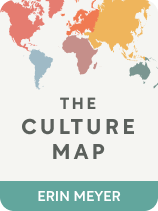

This article is an excerpt from the Shortform book guide to "The Culture Map" by Erin Meyer. Shortform has the world's best summaries and analyses of books you should be reading.
Like this article? Sign up for a free trial here .
What is analytical thinking? Which cultures tend to think analytically?
The analytical way of thinking focuses on the individual elements and de-emphasizes the surrounding circumstances. According to Erin Meyer, the author of The Culture Map, the analytical way of thinking is most prevalent in Western countries.
In this article, we’ll consider what analytical thinking means in a cultural context.
Defining Analytical Cultures
Many people interpret the phrase analytical thinking as thinking with an emphasis on structure, mathematics, or logic. But the key feature of the analytical way of thinking is the tendency to consider something individually, de-emphasizing its relationship with the environment. It’s not a tendency to view something through a more mathematical lens.
In business, this might be seen in how they evaluate risk. Researchers argue that analytical thinkers “typically expect states of the world to be stable.” This could be because they focus on the individual element. Furthermore, “when change is occurring, such as a stock growing in value, change is presumed to follow a linear trend”—to the point where Canadians sold falling stocks and bought rising stocks, but Chinese people (perhaps counterintuitively to the Western mind) bought falling stocks and sold rising stocks because they assumed the change wouldn’t continue.
Meyer states that a common criticism of analytical cultures is that they ignore the overall context too much. Critics think analytical thinkers can’t see the overarching influences on their thoughts or the potential broader impacts of their actions, so they must be incompetent. Critics might also just think they’re rushing and ignoring those influences.
Why Analytical Thinking Develops
Meyer argues that the analytical thinking of Western countries derives from elements of Western philosophy.
Specifically, she states that Western philosophies assess objects independently without necessarily considering them in the overall context. As an example, Meyer describes how Aristotle ascribed the principles of levity and gravity to particular items—a falling rock had the property of “gravity,” while a floating log had the “levity” property. Rather than viewing “levity” as an interaction between the log and its environment, he saw it as a property of the log itself.
(Shortform note: Since this example comes from Aristotelian physics, it may not seem to support Meyer’s claim that philosophy influences culture. But Aristotle didn’t differentiate between physics and philosophy—he and his contemporaries studied “natural philosophy,” which encompassed both physics and philosophy. The two disciplines were indistinguishable until the development of natural science in the 19th century.)
Meyer argues that this common Western tendency to consider objects independently—as items with characteristics and not in relation to one another or to external forces—is the root of modern-day analytical thinking: Today’s Western businesspeople assess elements independently because their religions and philosophies did so, too.
(Shortform note: Another possible explanation for the difference in cultural cognition patterns is the “social orientation hypothesis.” It suggests that cultures that prize independence tend to think analytically, while cultures that prize interdependence tend to think dialectically. Researchers found that when Mexican farmers became more capitalist and thus more independent, they also thought more analytically.)

———End of Preview———
Like what you just read? Read the rest of the world's best book summary and analysis of Erin Meyer's "The Culture Map" at Shortform .
Here's what you'll find in our full The Culture Map summary :
- The eight axes you can use as a framework to analyze cultural differences
- How to better relate to those of another culture to accomplish business goals
- How the Vikings have more gender equality than we see today






